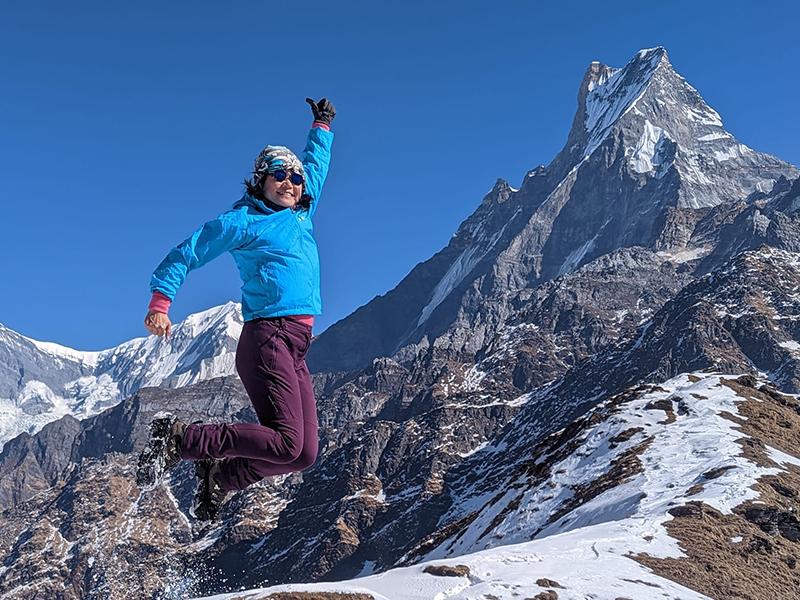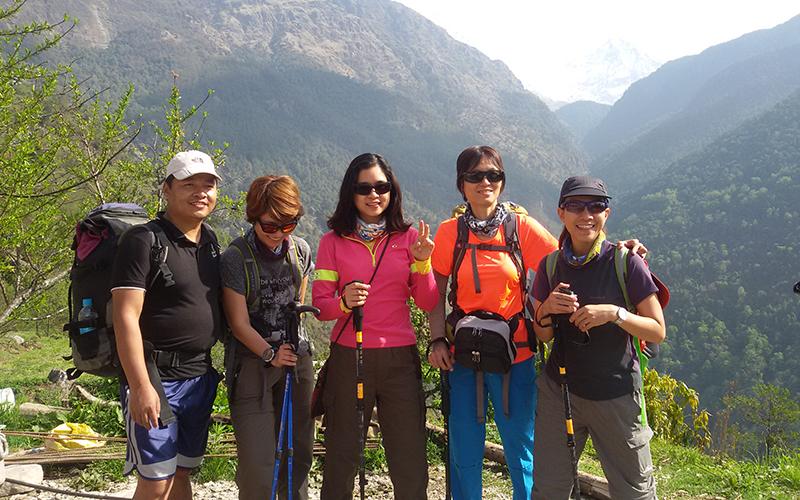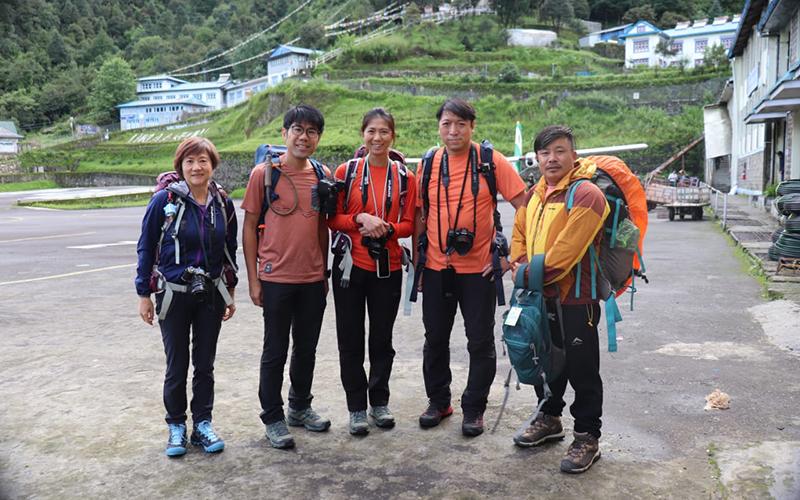Island Peak Guide

Exploring the Majestic Island Peak with an Experienced Guide
Are you looking for an adventure that will take your breath away? Island Peak climbing may be just what you need. This Himalayan peak, also known as Imja Tse, stands at an impressive 6,189 meters and offers a challenging yet rewarding climb for experienced mountaineers. As you make your way up to the top, you’ll be surrounded by stunning views of the surrounding mountains and glaciers. But, before embarking on this thrilling journey, it’s important to have a reliable guide who can help you navigate the terrain and ensure your safety. In this guide, we’ll take a closer look at what you can expect when climbing Island Peak and why having an experienced guide is essential for a successful and enjoyable climb. So, if you’re ready for an adventure of a lifetime, let’s get started!
What to know before attempting Island Peak
Climbing Island Peak is not for the faint of heart. It requires a great deal of physical and mental preparation, as well as a certain level of mountaineering experience. Before attempting this climb, it’s important to have a good understanding of what you’re getting into.
Firstly, you’ll need to be in excellent physical condition. This climb is not for beginners, and you’ll need to be able to handle a challenging and strenuous trek. You’ll also need to be comfortable with high altitudes, as you’ll be climbing to over 6,000 meters.
In addition to physical fitness, you’ll need to have some mountaineering experience. Island Peak is a technical climb, and you’ll need to be comfortable with using crampons, ice axes, and ropes. You’ll also need to have experience with glacier travel and the ability to self-arrest in case of a fall.
Finally, it’s important to have a good understanding of the risks involved. Altitude sickness is a real danger on this climb, and you’ll need to be able to recognize the symptoms and take appropriate action. You’ll also need to be prepared for sudden changes in weather and have the ability to deal with emergencies.

Benefits of climbing Island Peak
Despite the challenges, climbing Island Peak is an incredibly rewarding experience. For one thing, the views from the summit are simply breathtaking. You’ll be surrounded by some of the world’s most stunning mountains, including Lhotse, Nuptse, and Ama Dablam.
In addition to the views, climbing Island Peak is an excellent way to challenge yourself both physically and mentally. It requires a great deal of determination and perseverance, and the sense of accomplishment you’ll feel upon reaching the summit is truly unmatched.
Finally, climbing Island Peak allows you to immerse yourself in the beautiful culture of the Himalayas. You’ll have the opportunity to interact with local people and learn about their customs and traditions. This can be an incredibly enriching experience and one that you’ll remember for a lifetime.
Island Peak climbing statistics
Island Peak, also known as Imja Tse, stands at an impressive 6,189 meters (20,305 feet) above sea level. It’s located in the Khumbu region of Nepal and is part of the Himalayas. The climb is considered a technical climb and requires a certain level of mountaineering experience.
The climb typically takes around 14-18 days, depending on the itinerary. During this time, climbers will trek through some of the most beautiful and remote parts of the Himalayas, including the Khumbu Valley and the Everest Base Camp.
In terms of difficulty, Island Peak is rated as a PD+ climb, which means it’s moderately difficult. Climbers will need to be comfortable with using crampons, ice axes, and ropes, as well as have experience with glacier travel.
Island Peak climbing route and itinerary
The climbing route for Island Peak typically starts in Kathmandu, where climbers will spend a day or two preparing for the climb. From there, climbers will fly to Lukla and begin a trek through the Khumbu Valley.
The trek takes around 10 days and includes stops at various villages and tea houses along the way. Some of the notable stops include Namche Bazaar, Tengboche, and Dingboche.
Once climbers reach Chhukung, they’ll spend a day acclimatizing before beginning the climb. The climb itself takes around 2-3 days and includes stops at Island Peak Base Camp and High Camp.
After reaching the summit, climbers will make their way back down to Chhukung and then continue on to Lukla. From there, they’ll fly back to Kathmandu and spend a day or two relaxing and reflecting on their incredible journey.
Essential gear for Island Peak climbing
Climbing Island Peak requires a significant amount of gear, and it’s important to have the right equipment to ensure your safety and comfort. Some of the essential gear you’ll need includes:
– Mountaineering boots, Crampons, Ice axe, Harness, Rope, Helmet, Gaiters, Down jacket, Sleeping bag, Trekking poles, Headlamp, Sunglasses, Sunscreen, First aid kit
It’s important to invest in high-quality gear and to make sure it’s properly fitted before embarking on the climb.
Physical preparation for Island Peak climbing
Climbing Island Peak is a physically demanding activity, and it’s important to be in excellent physical condition before attempting the climb. Some of the ways to prepare physically include:
– Cardiovascular exercise, such as running or cycling
– Strength training, focusing on the legs and core
– Hiking or trekking to build endurance
– Altitude training, if possible
It’s important to begin preparing several months in advance to give your body time to acclimate to the physical demands of the climb.
Mental preparation for Island Peak climbing
In addition to physical preparation, it’s important to be mentally prepared for the challenges of climbing Island Peak. Some ways to prepare mentally include:
– Visualization and mental rehearsal
– Meditation or mindfulness practices
– Developing a positive attitude and mindset
– Building mental toughness through challenging experiences
It’s important to remember that climbing Island Peak is a difficult and challenging activity, and it’s normal to experience some fear or anxiety. However, with proper preparation and a positive mindset, you can overcome these challenges and have a successful climb.
Safety Precautions for Island Peak Climbing
Climbing Island Peak can be dangerous, and it’s important to take appropriate safety precautions to minimize the risks. Some of the safety precautions to take include:
– Hiring an experienced guide
– Acclimatizing properly
– Monitoring for signs of altitude sickness
– Proper use of mountaineering equipment
– Paying attention to weather conditions
– Having a plan for emergencies
It’s important to take these safety precautions seriously and to be prepared for emergencies.
Hiring a guide for Island Peak climbing
Perhaps the most important decision you’ll make when climbing Island Peak is choosing a guide. An experienced guide can make all the difference in ensuring a successful and enjoyable climb.
When choosing a guide, look for someone with experience climbing Island Peak and other peaks in the region. They should be certified by a reputable organization and have a good reputation in the climbing community.
Your guide should also be able to provide you with a detailed itinerary and explain the risks and safety precautions involved in the climb. They should be able to communicate effectively and be responsive to your needs and concerns.
Finally, it’s important to feel comfortable with your guide and to trust their judgment. A good guide will be able to help you navigate the challenges of the climb and ensure your safety and comfort throughout the journey.







